
Sibiu: The Heart of Transylvanian Charm
Discover Sibiu: A Medieval Gem in Romania's Heart, Rich in History, Culture, and Culinary Delights.
Nestled in the heart of Romania, the Sibiu Area is a captivating blend of medieval charm and vibrant culture. Known for its picturesque old town, Sibiu is a city where history comes alive. Walk through its cobblestone streets and you’ll find yourself surrounded by colorful buildings, historic churches, and charming squares. The iconic Big Square (Piața Mare) is the perfect place to start your exploration, offering a glimpse into the city's rich past. Sibiu is not just about its historical architecture; it’s also a cultural hub. The city hosts numerous festivals throughout the year, including the famous Sibiu International Theatre Festival. Art lovers will appreciate the Brukenthal National Museum, one of the oldest museums in Romania, housing an impressive collection of European art. For a breath of fresh air, venture out to the nearby Carpathian Mountains or visit the Astra National Museum Complex, an open-air museum showcasing traditional Romanian village life. Foodies will delight in Sibiu’s culinary offerings. The local cuisine is a delicious mix of Romanian and Saxon influences. Don’t miss the chance to try local specialties like ciorbă (sour soup) and mămăligă (polenta). Pair your meal with a glass of local wine or a craft beer from one of Sibiu’s microbreweries. Whether you’re an adventurer, a history buff, or a culture enthusiast, Sibiu offers something for every traveler.
Local tips in Sibiu Area
- Visit during the Sibiu International Theatre Festival for a unique cultural experience.
- Explore the Astra National Museum Complex to see traditional Romanian village life.
- Wear comfortable footwear; the cobblestone streets can be tricky to navigate.
- Try local dishes like ciorbă and mămăligă for an authentic culinary experience.
- Take a day trip to the nearby Carpathian Mountains for hiking and stunning views.
Sibiu: The Heart of Transylvanian Charm
Nestled in the heart of Romania, the Sibiu Area is a captivating blend of medieval charm and vibrant culture. Known for its picturesque old town, Sibiu is a city where history comes alive. Walk through its cobblestone streets and you’ll find yourself surrounded by colorful buildings, historic churches, and charming squares. The iconic Big Square (Piața Mare) is the perfect place to start your exploration, offering a glimpse into the city's rich past. Sibiu is not just about its historical architecture; it’s also a cultural hub. The city hosts numerous festivals throughout the year, including the famous Sibiu International Theatre Festival. Art lovers will appreciate the Brukenthal National Museum, one of the oldest museums in Romania, housing an impressive collection of European art. For a breath of fresh air, venture out to the nearby Carpathian Mountains or visit the Astra National Museum Complex, an open-air museum showcasing traditional Romanian village life. Foodies will delight in Sibiu’s culinary offerings. The local cuisine is a delicious mix of Romanian and Saxon influences. Don’t miss the chance to try local specialties like ciorbă (sour soup) and mămăligă (polenta). Pair your meal with a glass of local wine or a craft beer from one of Sibiu’s microbreweries. Whether you’re an adventurer, a history buff, or a culture enthusiast, Sibiu offers something for every traveler.
When is the best time to go to Sibiu Area?
Iconic landmarks you can’t miss
Dumbrava Sibiului Natural Park
Explore the enchanting landscapes and rich biodiversity of Dumbrava Sibiului Natural Park, a serene escape near Sibiu, Romania, for nature lovers.

The Bridge of Lies
Discover the enchanting Bridge of Lies in Sibiu, a historical landmark steeped in folklore and stunning views, perfect for every traveler.

The Large Square
Explore the vibrant heart of Sibiu at The Large Square, a historic attraction filled with stunning architecture, lively markets, and rich Romanian culture.
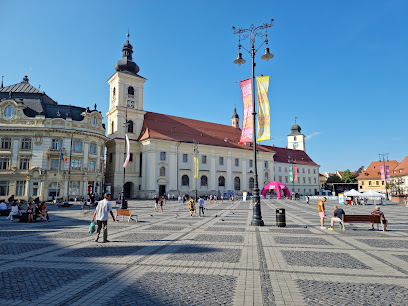
Sibiu Zoological Garden
Explore the enchanting Sibiu Zoological Garden, where wildlife encounters and lush landscapes await every visitor.
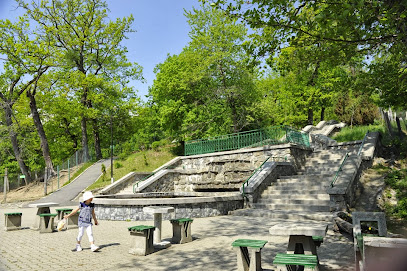
Sub Arini Park
Explore Sub Arini Park in Sibiu, a lush green haven offering playgrounds, sports terrains, and beautiful walking paths for all ages.
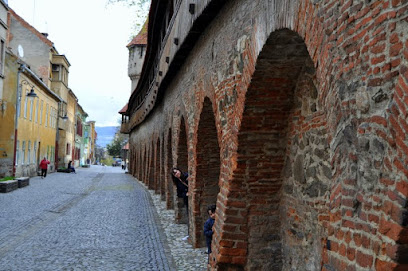
Citadel Park
Discover the tranquility and beauty of Citadel Park in Sibiu, a perfect blend of nature and history in Romania's charming heart.
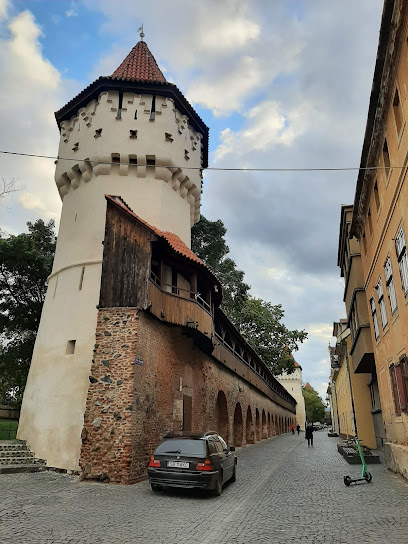
Turnul Sfatului
Discover the rich history and stunning views from Turnul Sfatului, Sibiu's iconic tower, a must-visit landmark for all travelers.

“Saint Mary” Evangelical Cathedral
Experience the grandeur of the 'Saint Mary' Evangelical Cathedral in Sibiu, a gothic masterpiece rich in history and architectural beauty.
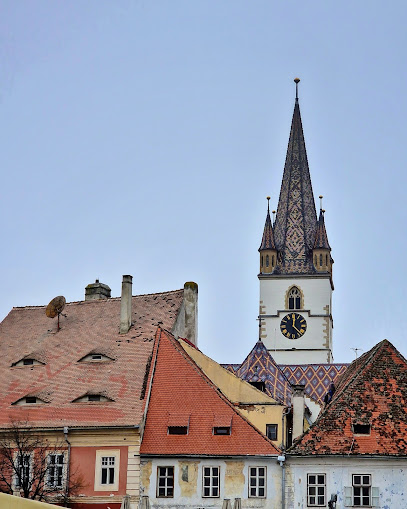
Natural History Museum
Discover the fascinating world of biodiversity at Sibiu's Natural History Museum, where nature's wonders come to life through engaging exhibits and educational experiences.
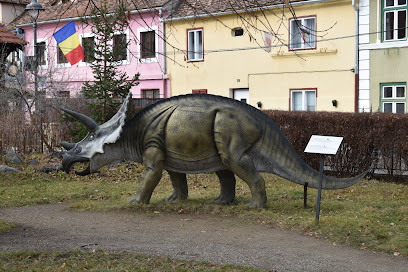
Muzeul Național Brukenthal
Explore the rich tapestry of art and history at Muzeul Național Brukenthal, one of Romania's foremost cultural attractions in the heart of Sibiu.

The Thick Tower, Sibiu State Philharmonic, Thalia Hall.
Explore the Thick Tower, Sibiu State Philharmonic, and Thalia Hall for a rich blend of history, culture, and breathtaking architecture in Sibiu.
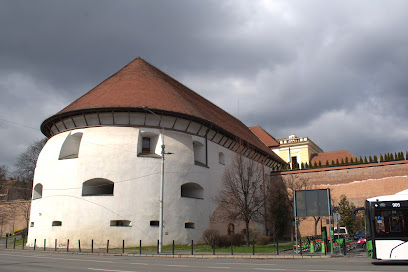
Sibiu Steam Engines Museum
Explore the Sibiu Steam Engines Museum, a captivating journey through the history of steam locomotion and railway technology in Romania.

Turnul Dulgherilor
Discover the medieval beauty and panoramic views of Turnul Dulgherilor, a captivating historical tower in the heart of Sibiu, Romania.
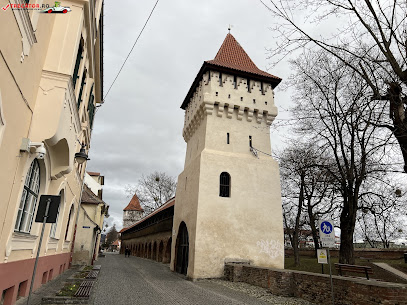
Potters Tower
Discover the historical beauty of Potters Tower in Sibiu, a must-visit landmark offering stunning views and a glimpse into Romania's medieval past.

Museum of Hunting August von Spiess
Uncover the fascinating history of hunting in Romania at the Museum of Hunting August von Spiess, a cultural gem in the heart of Sibiu.
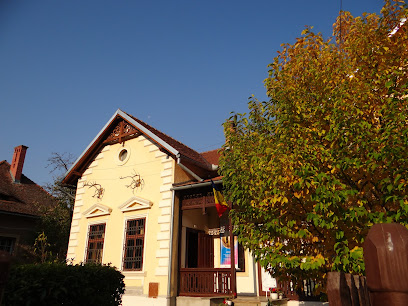
Unmissable attractions to see
Sibiu Zoological Garden
Explore the enchanting Sibiu Zoological Garden, a family-friendly destination showcasing diverse wildlife and promoting conservation education.
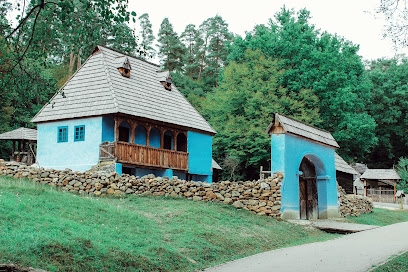
Astra National Museum Complex
Explore Romania's rich cultural tapestry at Astra National Museum Complex, an open-air ethnographic museum in the heart of Sibiu.
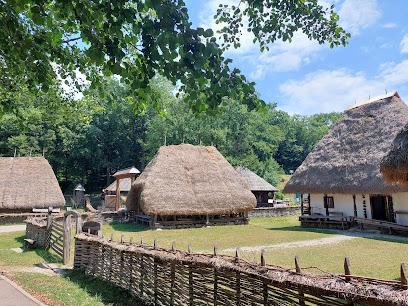
Sibiu Steam Engines Museum
Discover the rich history of rail travel at the Sibiu Steam Engines Museum, showcasing a remarkable collection of steam locomotives and artifacts.
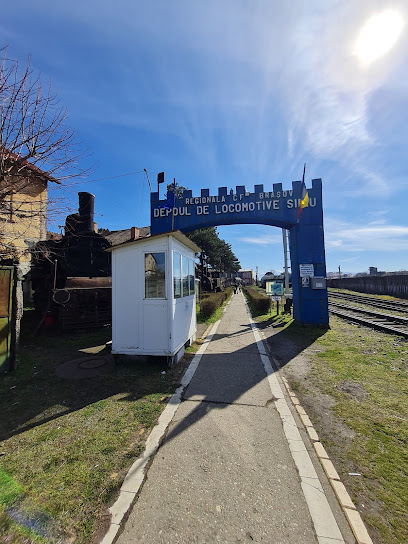
Church of the Annunciation
Explore the Church of the Annunciation in Sibiu, a stunning Orthodox architectural gem rich in history and beauty, perfect for spiritual seekers and tourists alike.
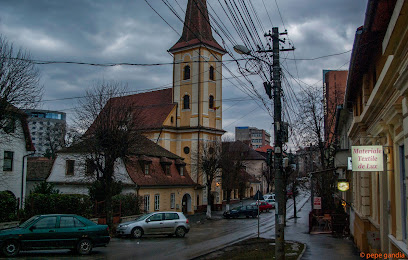
Harquebusiers Tower
Discover the historic Harquebusiers Tower in Sibiu, a captivating blend of architecture, history, and stunning views of the vibrant cityscape.
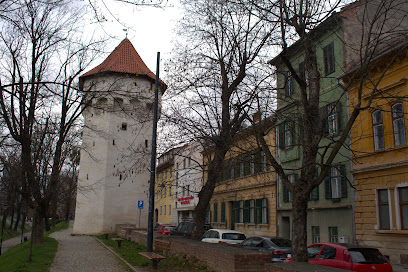
Șopa Natural Park
Explore the serene beauty of Șopa Natural Park in Șelimbăr, Romania, a wildlife haven perfect for nature lovers and adventure seekers alike.
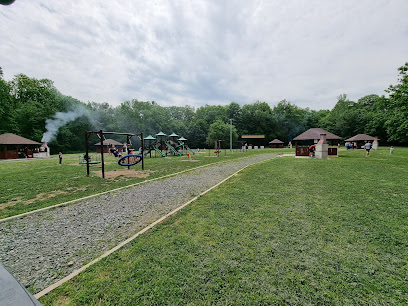
Nico Sibiu Guide
Explore the enchanting city of Sibiu with expert-guided tours from Nico Sibiu Guide, celebrating culture, history, and culinary delights.
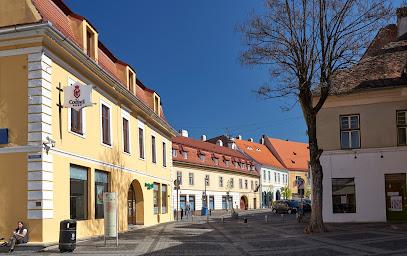
Sibiu Tourist Info Center
Explore Sibiu's rich heritage and vibrant culture at the Tourist Info Center, your essential guide to this breathtaking Romanian city.
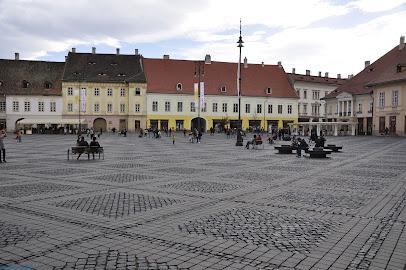
Air Tour Travel
Discover the beauty of Romania with Air Tour Travel, your gateway to exceptional tours and personalized adventures in Sibiu.
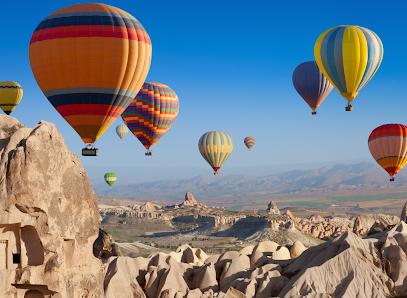
Holy Trinity Church
Explore the breathtaking Holy Trinity Church in Sibiel, a jewel of Orthodox architecture with vibrant frescoes and serene surroundings.
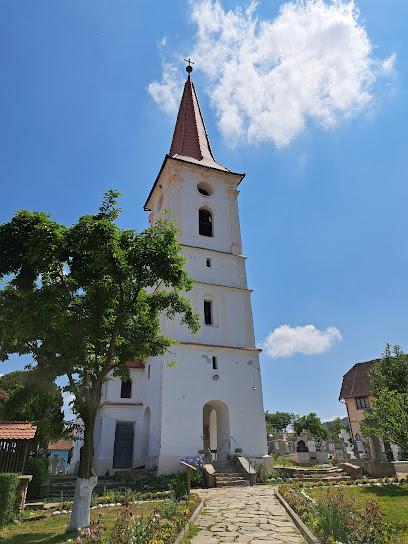
Essential places to dine
Crama Sibiul Vechi
Discover authentic Romanian flavors at Crama Sibiul Vechi, a charming restaurant in Sibiu offering traditional dishes in a warm atmosphere.
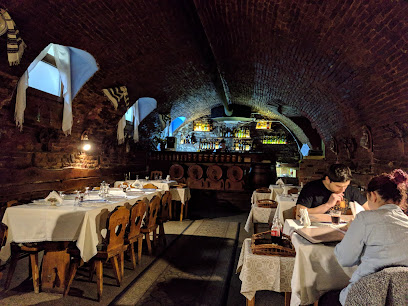
Kulinarium
Discover Kulinarium in Sibiu for an unforgettable culinary journey featuring traditional Romanian dishes alongside innovative vegetarian options.
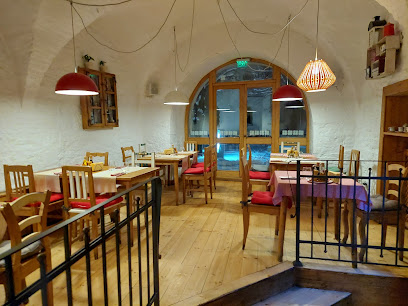
Benjamin Steakhouse & Bar
Discover the flavors of Romania at Benjamin Steakhouse & Bar in Sibiu – where every steak tells a story.
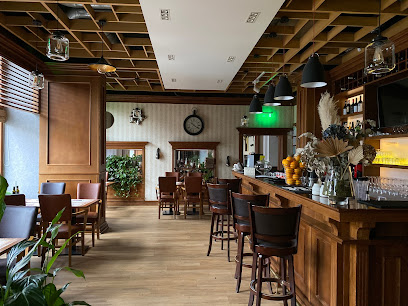
La Cuptor
Experience exquisite French cuisine at La Cuptor in Sibiu, where seafood meets steak for an unforgettable culinary journey.
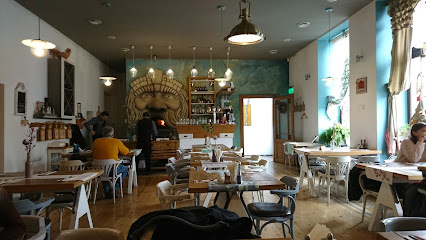
Restaurant Hermania
Experience the best of German cuisine at Restaurant Hermania in Sibiu - where tradition meets taste in every dish.
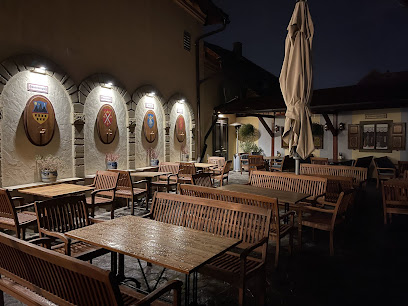
Jacob Grillhouse
Discover culinary excellence at Jacob Grillhouse in Sibiu, where traditional Romanian flavors meet modern grilling perfection.
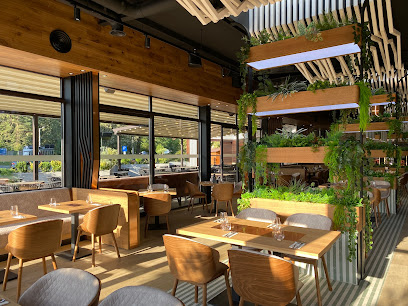
Kon Tiki
Discover the essence of Romanian cuisine at Kon Tiki in Sibiu - where tradition meets flavor in every dish.
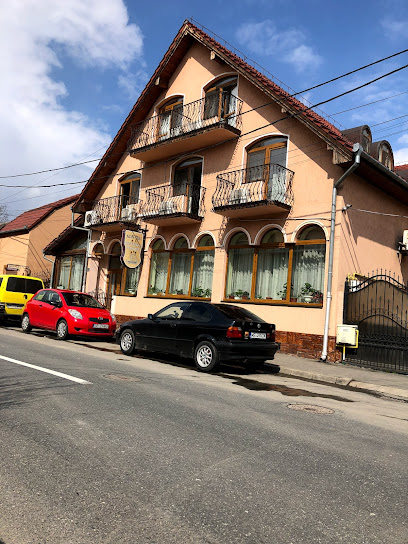
La Dobrun
Discover authentic Romanian flavors at La Dobrun in Sibiu – where tradition meets culinary excellence.
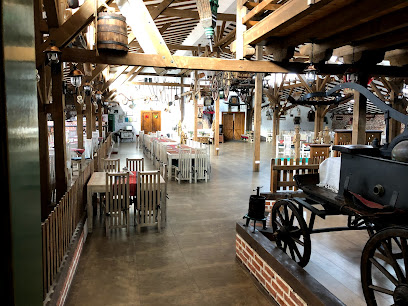
La Turn
Experience authentic Romanian cuisine at La Turn, located in Sibiu's historic Piata Mare—where tradition meets taste.
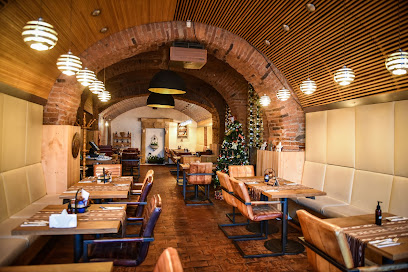
Pardon Cafe & Bistro Sibiu
Discover culinary delights at Pardon Cafe & Bistro Sibiu – where every meal is a celebration of flavors and hospitality.
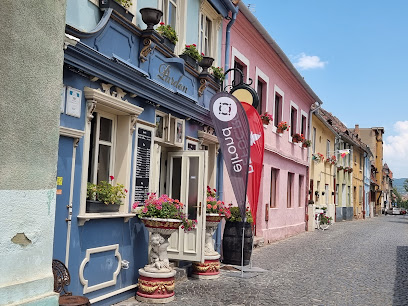
Max The Original
Discover an exquisite blend of traditional Romanian cuisine and modern culinary artistry at Max The Original in Sibiu.
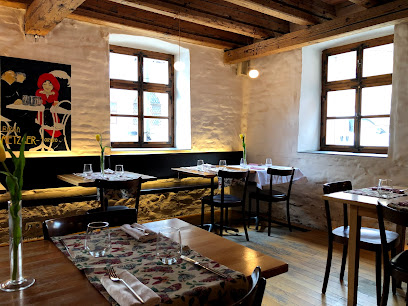
Restaurant Prima
Experience authentic Romanian cuisine at Restaurant Prima in Sibiu—where tradition meets taste in a charming setting.
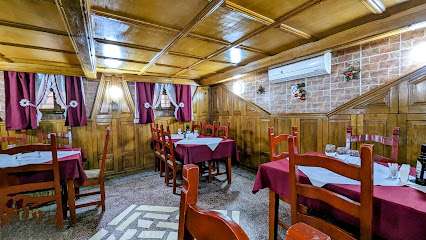
La Taifas
Discover La Taifas - A culinary gem in Sibiu offering traditional Romanian dishes and exquisite steaks in a cozy setting.
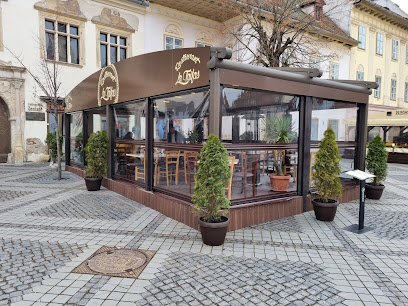
Crama Sibiană
Experience authentic Romanian cuisine at Crama Sibiană in scenic Sibiu—where tradition meets flavor in every dish.
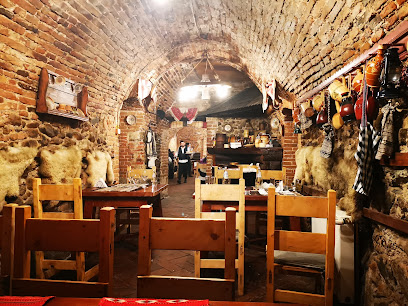
Hochmeister delikat'essen
Discover Hochmeister Delikat'essen: A culinary haven in Sibiu serving authentic Romanian dishes with a modern twist.

Markets, malls and hidden boutiques
Shopping City Sibiu
Discover Shopping City Sibiu, where modern shopping meets vibrant entertainment in a picturesque Romanian setting.

Promenada Mall
Promenada Mall in Sibiu: A premier shopping and entertainment destination with diverse dining options and a vibrant atmosphere.
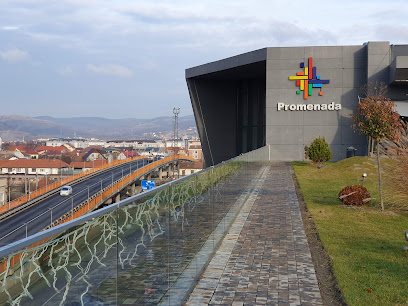
Cibin Market
Explore the vibrant Cibin Market in Sibiu, Romania, and immerse yourself in the local flavors and cultural experiences of a traditional farmers' market.
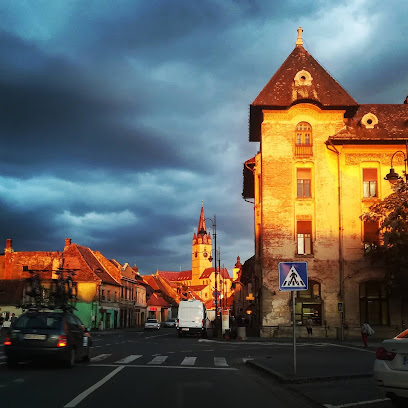
Galeriile Comerciale Pacea
Explore the lively Galeriile Comerciale Pacea in Sibiu for a unique shopping and dining experience in Romania's cultural heart.
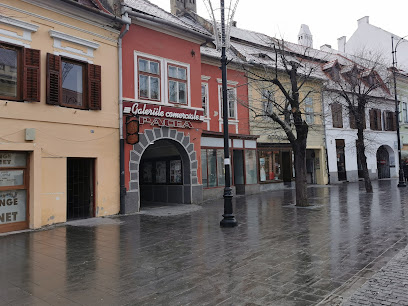
PANDORA
Explore the elegance of PANDORA in Sibiu, where exquisite jewelry meets exceptional craftsmanship for an unforgettable shopping experience.
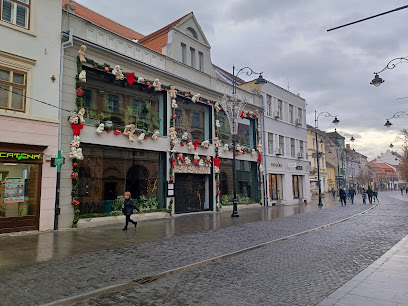
Humana
Explore Humana in Sibiu for an unforgettable thrift shopping experience filled with unique finds and sustainable fashion choices.
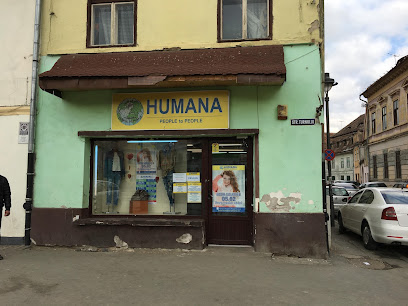
Dragonu Rosu Shop
Explore Dragonu Rosu Shop in Sibiu for unique home goods, local crafts, and a taste of Romanian culture.
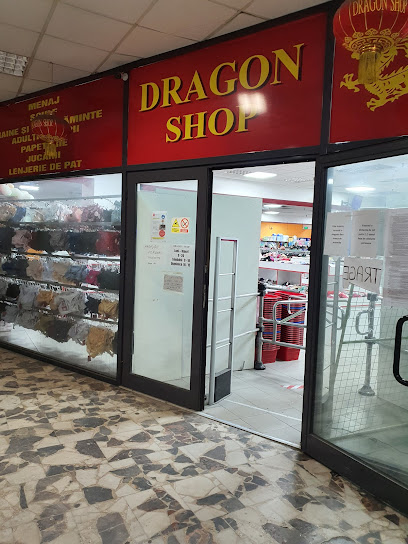
JUJUBE Atelier
Explore JUJUBE Atelier in Sibiu for handcrafted Romanian designs, unique gifts, and a glimpse into the local artisan culture.
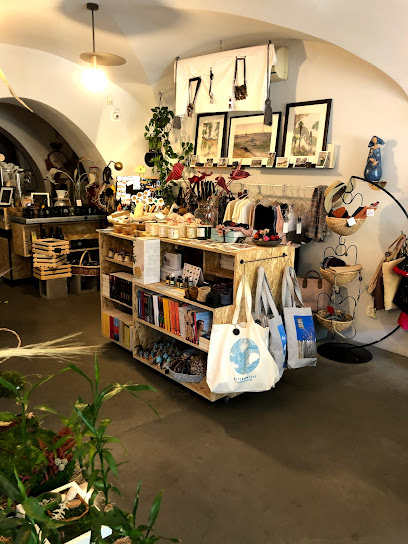
SEPHORA SIBIU PROMENADA
Discover the ultimate beauty experience at SEPHORA SIBIU PROMENADA, where luxury meets accessibility in cosmetics and fragrances.
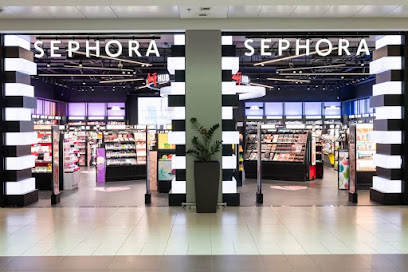
Sophia România Sibiu
Explore exquisite curtains and home decor at Sophia România Sibiu, where Romanian craftsmanship meets modern design in a charming atmosphere.
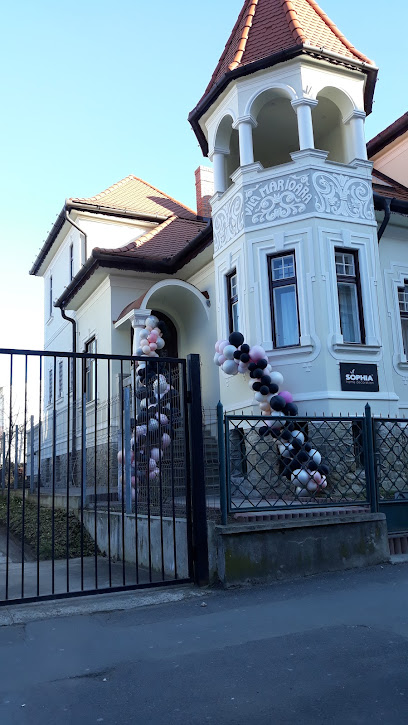
Eco Zen Boutique
Explore the finest selection of beers, wines, and liquors at Eco Zen Boutique in Sibiu - a must-visit for beverage enthusiasts.
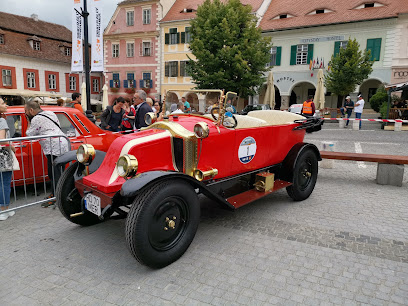
Gossip Tree
Discover unique Romanian designer fashion at Gossip Tree in Sibiu - a boutique treasure for every fashion enthusiast.
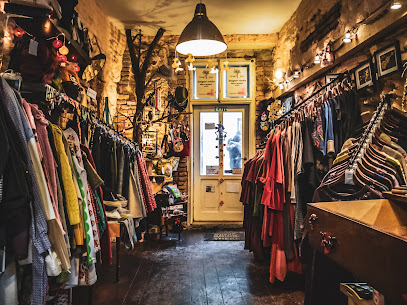
Lullula Art Shop
Explore the vibrant Lullula Art Shop in Sibiu, where unique gifts and local artistry come together to create unforgettable memories.

IA SIBIU Concept Store
Explore IA SIBIU Concept Store for vintage treasures and traditional Romanian clothing in the heart of Sibiu, a unique shopping experience awaits.
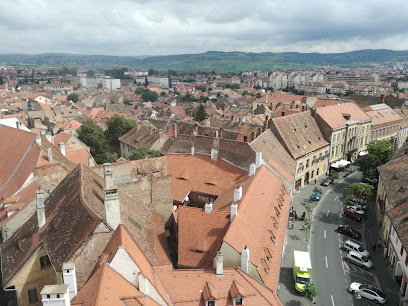
Naked Shop - Magazin Zero Waste
Explore Naked Shop - Magazin Zero Waste for a unique eco-friendly shopping experience, offering organic products and sustainable solutions for conscious tourists.
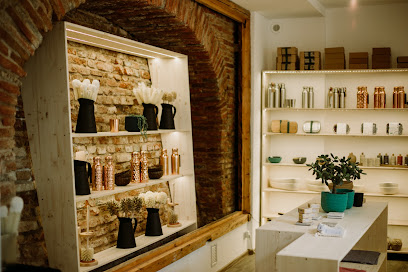
Essential bars & hidden hideouts
Benjamin Steakhouse & Bar
Experience the ultimate steak dining in Sibiu at Benjamin Steakhouse & Bar, where exquisite flavors meet a warm, inviting atmosphere.
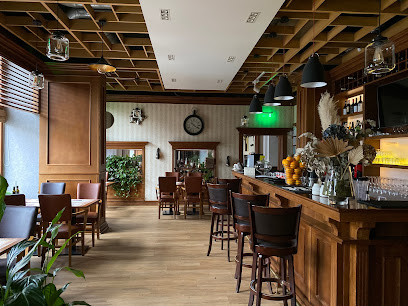
Music Pub
Discover the lively ambiance and exceptional live music at Music Pub, a must-visit destination in the heart of Sibiu.
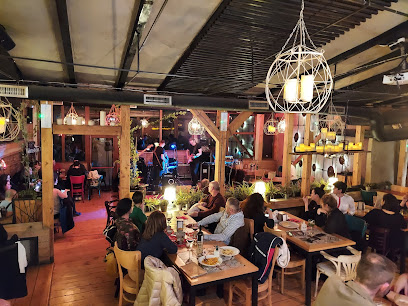
Pardon Cafe & Bistro Sibiu
Experience the charm of Transylvania at Pardon Cafe & Bistro Sibiu, where delicious food meets a cozy atmosphere.
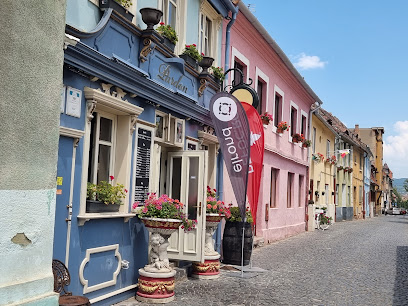
Kombinat Gastro-Brewery
Discover the culinary artistry of Kombinat Gastro-Brewery in Sibiu, where traditional Romanian cuisine meets innovative craft brewing for a unique dining experience.
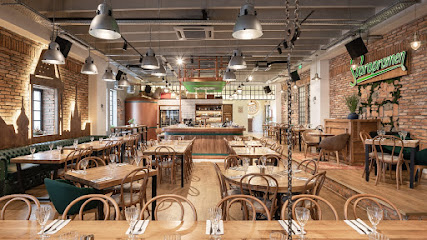
Ursus Cotton Pub
Discover the lively Ursus Cotton Pub in Sibiu, where delicious food meets a vibrant nightlife, perfect for tourists seeking fun and flavor.
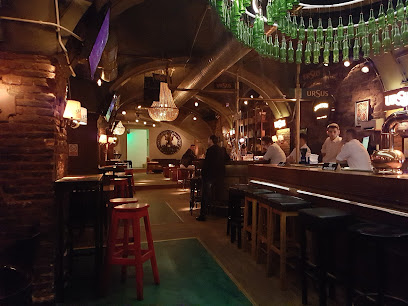
Oldies Pub
Experience the vibrant nightlife of Sibiu at Oldies Pub, where every night promises live music, great drinks, and an unforgettable ambiance.
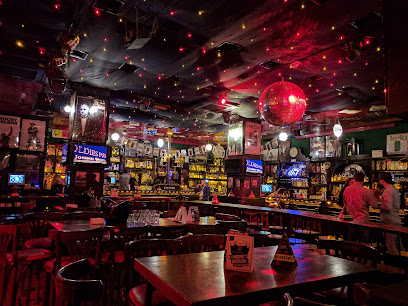
Joyme Pub
Experience the vibrant culinary scene of Sibiu at Joyme Pub, where local flavors and international cuisine come together in a lively atmosphere.

The Corner Factory pub & more
Discover the vibrant atmosphere of The Corner Factory in Sibiu, where delicious food and drinks meet local culture in a cozy setting.
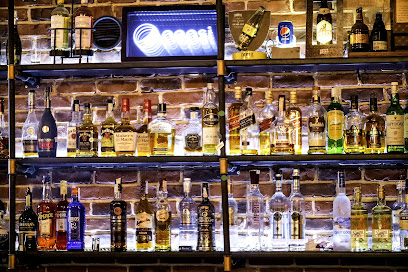
St. Andrew's Scottish Pub
Discover the inviting atmosphere of St. Andrew's Scottish Pub in Sibiu, where local culture meets a delightful selection of drinks and traditional cuisine.
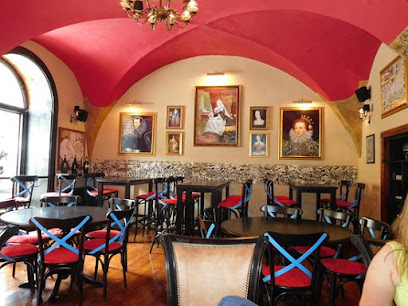
Play Off Lounge & Bar
Experience the lively ambiance of Play Off Lounge & Bar in Sibiu, offering delicious food, refreshing drinks, and a vibrant social scene for all visitors.
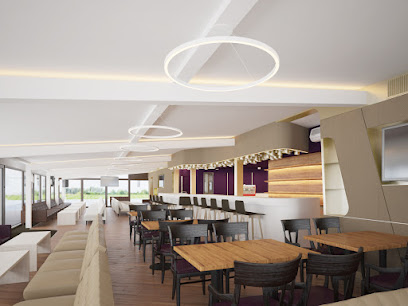
Ribs & Beer Sibiu
Discover the perfect blend of craft beer and mouth-watering ribs at Ribs & Beer, Sibiu's beloved brewpub offering a taste of local flavors.
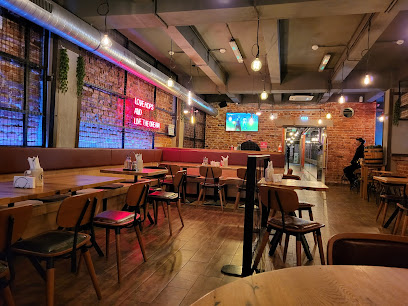
Pivnita de vinuri Weinkeller
Experience the best of Romanian cuisine and wine at Pivnita de vinuri Weinkeller in Sibiu, a delightful restaurant with a cozy atmosphere.
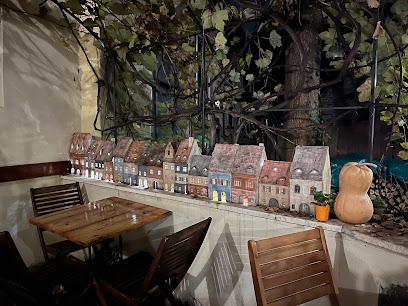
Imperium Pub
Discover the lively Imperium Pub in Sibiu, a bar where karaoke and live music create unforgettable nights in a vibrant atmosphere.
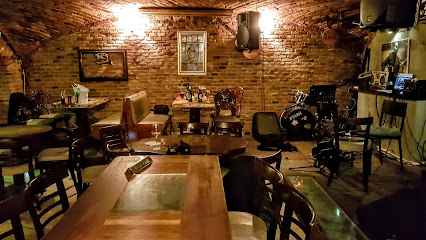
House of Ellixirz - Cocktail Bar
Discover the magic of mixology at House of Ellixirz, the premier cocktail bar in Sibiu, where every drink tells a story.
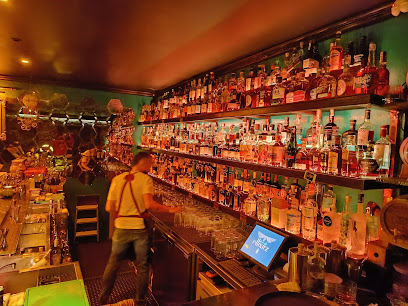
Rock N'Bike Club
Experience the vibrant nightlife of Sibiu at Rock N'Bike Club, where karaoke and a lively bar atmosphere come together for unforgettable nights.
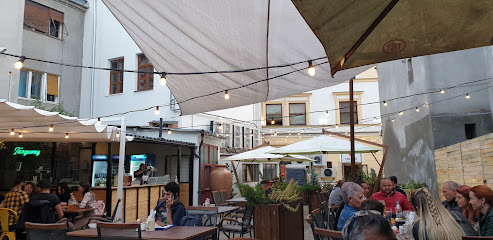
Local Phrases about Sibiu Area
-
- HelloSalut
[sah-loot] - GoodbyeLa revedere
[lah reh-veh-deh-reh] - YesDa
[dah] - NoNu
[noo] - Please/You're welcomeTe rog
[teh rohg] - Thank youMulțumesc
[mool-tsoo-mesk] - Excuse me/SorryScuzați-mă
[skoo-zah-tsi muh] - How are you?Ce mai faci?
[cheh my fahch?] - Fine. And you?Bine. Și tu?
[bee-neh. shee too?] - Do you speak English?Vorbiți engleză?
[vor-beets eng-leh-zuh?] - I don't understandNu înțeleg
[noo in-tseh-leg]
- HelloSalut
-
- I'd like to see the menu, pleaseAș dori să văd meniul, vă rog
[ahsh doh-ree suh vuhd meh-nyool, vuh rohg] - I don't eat meatNu mănânc carne
[noo muh-nuhnk kahr-neh] - Cheers!Noroc!
[noh-rok] - I would like to pay, pleaseAș dori să plătesc, vă rog
[ahsh doh-ree suh pluh-tesk, vuh rohg]
- I'd like to see the menu, pleaseAș dori să văd meniul, vă rog
-
- Help!Ajutor!
[ah-yoo-tor] - Go away!Du-te!
[doo-teh] - Call the Police!Sună la Poliție!
[soo-nuh lah poh-leetzyeh] - Call a doctor!Sună un doctor!
[soo-nuh oon dohk-tohr] - I'm lostM-am pierdut
[mahm pyehr-dooot] - I'm illSunt bolnav
[soont bohl-nahv]
- Help!Ajutor!
-
- I'd like to buy...Aș dori să cumpăr...
[ahsh doh-ree suh koom-puhr] - I'm just lookingDoar mă uit
[doh-ahr muh ooyt] - How much is it?Cât costă?
[kaht kohs-tuh] - That's too expensiveE prea scump
[eh preh skoomp] - Can you lower the price?Puteți să scădeți prețul?
[poo-tehts suh skuh-dehts prehtsool]
- I'd like to buy...Aș dori să cumpăr...
-
- What time is it?Cât este ceasul?
[kaht yehs-teh cheh-ah-sool] - It's one o'clockEste ora unu
[eh-steh oh-rah oon-oo] - Half past (10)Jumătate după (10)
[joo-muh-tah-teh doo-puh (doh-zehsht-eh)] - MorningDimineața
[dee-mee-neh-tsa] - AfternoonDupă-amiază
[doo-puh ah-mya-zuh] - EveningSeara
[seh-ah-rah] - YesterdayIeri
[yehr] - TodayAstăzi
[ah-stuh-zee] - TomorrowMâine
[muh-ee-neh] - 1unu
[oon-oo] - 2doi
[doy] - 3trei
[tray] - 4patru
[paht-roo] - 5cinci
[cheen-chee] - 6șase
[shah-seh] - 7șapte
[shahp-teh] - 8opt
[opt] - 9nouă
[noo-wuh] - 10zece
[zeh-che]
- What time is it?Cât este ceasul?
-
- Where's a/the...?Unde este unul/o...
[oon-deh yehs-teh oon-ool/oh] - What's the address?Care este adresa?
[kah-reh yehs-teh ah-dreh-sah] - Can you show me (on the map)?Puteți să-mi arătați (pe hartă)?
[poo-tehts suh-mee ah-rah-tsahts (peh hahr-tuh)] - When's the next (bus)?Când este următorul (autobuz)?
[kahnd yehs-teh oor-muh-toh-rool (ow-toh-booz)] - A ticket (to ....)Un bilet (către ...)
[oon bee-let (kuh-treh)]
- Where's a/the...?Unde este unul/o...
History of Sibiu Area
-
In the 12th century, the King of Hungary invited German settlers, known as Saxons, to colonize Transylvania, including the area that is now Sibiu. These settlers established Hermannstadt, now known as Sibiu, which became a significant cultural and economic center in the region.
-
Sibiu's fortifications were among the strongest in Transylvania. The first walls were erected in the 13th century, with later expansions and improvements over the centuries. The city boasted several towers and bastions, some of which, like the Council Tower, still stand today.
-
During the 14th and 15th centuries, Sibiu enjoyed a period of prosperity, bolstered by its strategic position on trade routes. It became the most important economic and cultural center in the region, with flourishing crafts, guilds, and an influential merchant class.
-
Sibiu has been a crossroads of various cultures and religions. It became a Protestant stronghold during the Reformation, while also housing significant Romanian Orthodox, Roman Catholic, and Jewish communities. This diverse cultural heritage is reflected in the city's architecture and institutions.
-
The 18th century brought a wave of Enlightenment thinking to Sibiu. The city became a center of education and culture, with the establishment of schools, libraries, and printing presses. The Baroque style also left a significant mark on the city's architecture, seen in buildings like the Brukenthal Palace.
-
Sibiu played a crucial role in the 1848 Revolution in Transylvania, which sought greater autonomy from the Habsburg Empire. The revolution brought together Romanians, Saxons, and Hungarians in a struggle for national rights, with Sibiu being a focal point of revolutionary activity.
-
After World War I and the dissolution of the Austro-Hungarian Empire, Sibiu became part of Romania in 1918. This period marked significant political and social changes, as Sibiu transitioned from a multi-ethnic Austro-Hungarian city to an integral part of the Romanian state.
-
Under communist rule, Sibiu underwent industrialization and modernization, though at the cost of some historical buildings and traditional ways of life. The city saw both economic growth and political repression during this period, leaving a complex legacy.
-
Since the fall of communism in 1989, Sibiu has experienced a cultural and economic revival. The city's rich history and well-preserved architecture attracted significant tourism, and in 2007, Sibiu was named a European Capital of Culture, highlighting its cultural renaissance.
Sibiu Area Essentials
-
Sibiu is located in the heart of Romania, and the nearest international airport is Sibiu International Airport (SBZ), which is just 5 kilometers from the city center. You can also reach Sibiu by train from major Romanian cities like Bucharest, Cluj-Napoca, and Brasov. Buses and car rentals are also available for those who prefer to drive.
-
Sibiu has an efficient public transportation system that includes buses and taxis. The city's historic center is best explored on foot. For trips to surrounding areas, renting a car can be convenient. Bicycles are also available for rent, and cycling is a popular way to explore the city and its surroundings.
-
The official currency in Romania is the Romanian Leu (RON). Credit and debit cards are widely accepted in Sibiu, including in hotels, restaurants, and larger shops. However, cash is still commonly used, especially in smaller establishments and rural areas. ATMs are widely available throughout the city.
-
Sibiu is generally a safe destination for tourists. However, like any travel destination, it's advisable to take standard precautions. Avoid poorly lit areas at night and keep an eye on your belongings in crowded places. The city does not have specific high-crime areas targeting tourists, but it's always best to stay vigilant.
-
In case of emergency, dial 112 for immediate assistance. Sibiu has well-equipped medical facilities, including emergency departments. Pharmacies are plentiful and can provide over-the-counter medications. It's recommended to have travel insurance that covers medical emergencies.
-
Fashion: Do dress modestly, especially when visiting religious sites. Avoid very revealing clothing. Religion: Do respect local customs and traditions. Cover your head when entering churches and monasteries. Public Transport: Do be respectful and give up your seat to elderly passengers. Don't eat or drink on public transport. Greetings: Do greet people with a handshake or a slight bow of the head as a sign of respect. Eating & Drinking: Do try local delicacies and accept food offerings graciously. Don't refuse hospitality, as it is considered impolite.
-
To experience Sibiu like a local, visit the local markets such as the Piata Cibin where you can buy fresh produce and traditional Romanian goods. Engage with locals, as they are often friendly and willing to share stories about the city's history and culture. Don't miss the ASTRA Museum of Traditional Folk Civilization, Europe's largest open-air museum, and take a leisurely walk through the historic old town, a UNESCO World Heritage Site.
Trending Landmarks in Sibiu Area
-
Dumbrava Sibiului Natural Park
-
The Bridge of Lies
-
The Large Square
-
Sibiu Zoological Garden
-
Sub Arini Park
-
Citadel Park
-
Turnul Sfatului
-
“Saint Mary” Evangelical Cathedral
-
Natural History Museum
-
Muzeul Național Brukenthal
-
The Thick Tower, Sibiu State Philharmonic, Thalia Hall.
-
Sibiu Steam Engines Museum
-
Turnul Dulgherilor
-
Potters Tower
-
Museum of Hunting August von Spiess
Nearby Cities to Sibiu Area
-
Things To Do in Râmnicu Vâlcea
-
Things To Do in Deva
-
Things To Do in Târgu Jiu
-
Things To Do in Brasov
-
Things To Do in Cluj-Napoca
-
Things To Do in Pitesti
-
Things To Do in Craiova
-
Things To Do in Drobeta-Turnu Severin
-
Things To Do in Baia Mare
-
Things To Do in Bucharest
-
Things To Do in Arad
-
Things To Do in Focsani
-
Things To Do in Satu Mare
-
Things To Do in Ruse
-
Things To Do in Suceava













